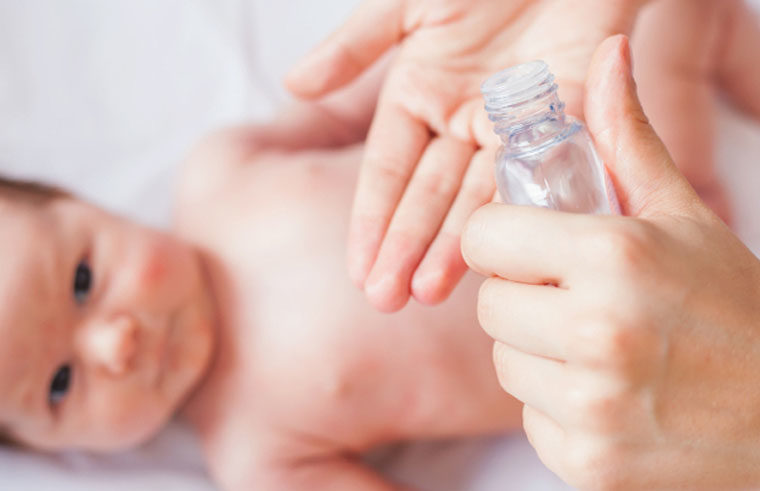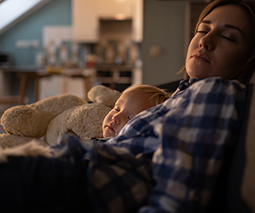Aromatherapy for babies: Here’s a little how-to guide to get you started

A sleep-deprived parent will try just about anything to help their bub sleep. Despite essential oils being a bit of a fad at the moment, studies suggest they may actually aide little ones with their sleep from about three months of age.
Not sure where to start? Here’s a little how-to guide on the basics of aromatherapy for babies.
What oils to use
- Lavender oil is well known for its soothing, calming and therapeutic properties. A 2007 study documented the cortisol levels of mothers and infants decrease after using a lavender scented bath oil. It has anti-anxiety properties and has been touted by some as an “aromatherapy equivalent of valium”, which is definitely something that could benefit both mother and baby.
- Roman Chamomile oil is another fabulous baby-safe oil you may like to use with your little one. It’s known for having relaxing and calming properties for soothing grumpiness, helping with insomnia and promoting sleep.
- Sweet Orange oil, also known as a happy, uplifting scent, may help with reducing nervous tension, sadness and it is said to support the normal functioning of a healthy immune system. This oil is safe to use from six months of age.

Precautions
There are some simple rules when it comes to using the above essential oils with your baby.
Firstly, make sure any aromatherapy products you buy are 100 percent pure, high-quality, therapeutic grade. You don’t want any nasty fillers, chemicals or added fragrances in products you use on your baby.
Second, always use a carrier oil when using essential oils – this dilutes the essentials oils enough to be safe to use on human skin. Never use any essential oils directly on baby’s skin. Good carrier oils include olive oil, coconut oil or grapeseed oil. For infants, this means using just 1-2 drops of oil per two tablespoons of carrier oil. Using a carrier oil also allows the oils to be distributed evenly and stop them from evaporating too fast.
Lastly, it is not advisable to orally ingest essential oils. Always keep your oils out of reach of children, and avoid applying them around your baby’s mouth or eyes.
How to use aromatherapy
There are a handful of ways you can use aromatherapy with your baby.
- Give your baby a bedtime massage. After a relaxing bath, lay your baby down and give them a gentle massage. Gentle and soothing for your baby, this is a great way to wind your little darling down and set the tone for a calm and peaceful night’s sleep.
- Diffuse the oils in the child’s sleeping space. Using a heat-free ultrasonic diffuser to scent and purify the air, your bub should be able to reap the therapeutic benefits as they sleep from about three months of age.
- Try an aromatherapy bath. Next time your little one has a bath, try adding some lavender oil to the bath water. Don’t forget to dilute the oil to avoid skin irritation and allow adequate dispersion.
- Cradle cap. Lavender oil can even help remove cradle cap from an infant’s head. Just add one drop of lavender oil to 1 tablespoon of carrier oil and massage gently using fingertips, being careful to avoid the soft fontanelle.
What oils to avoid
Due to their chemical components, some essential oils are not safe for use with babies and children. Therefore, it’s best to avoid the below oils:
- Eucalyptus
- Peppermint
- Rosemary
- Clove
- Cassia
- Melissa
- Oregano
- Ylang ylang
- Lemongrass
- Lemon Myrtle
If in doubt, it’s always best to consult an aromatherapist for the use of aromatherapy oils. But if you stick to the three essential oils listed at the start of this article and follow the precautions, you and your baby can enjoy the benefits that aromatherapy may offer.
Read more about alternative therapies:










